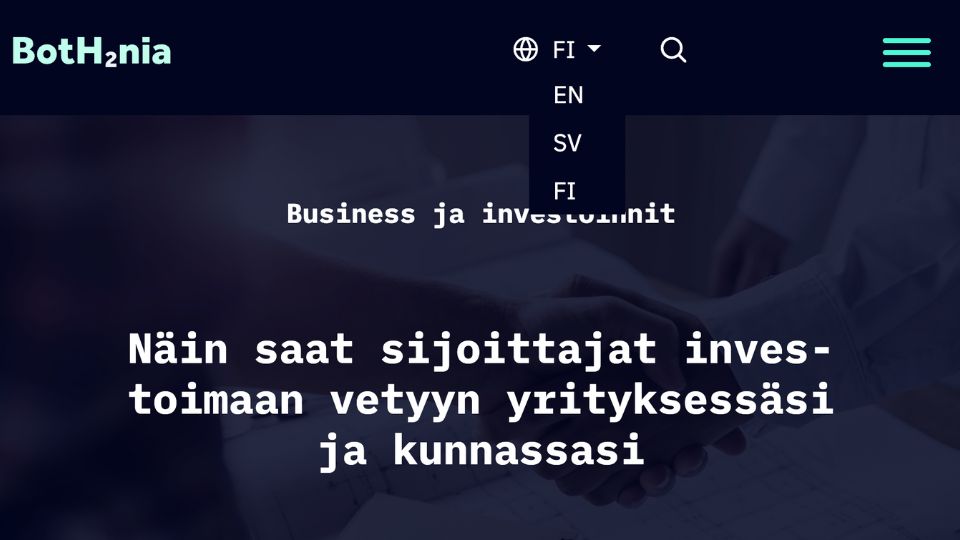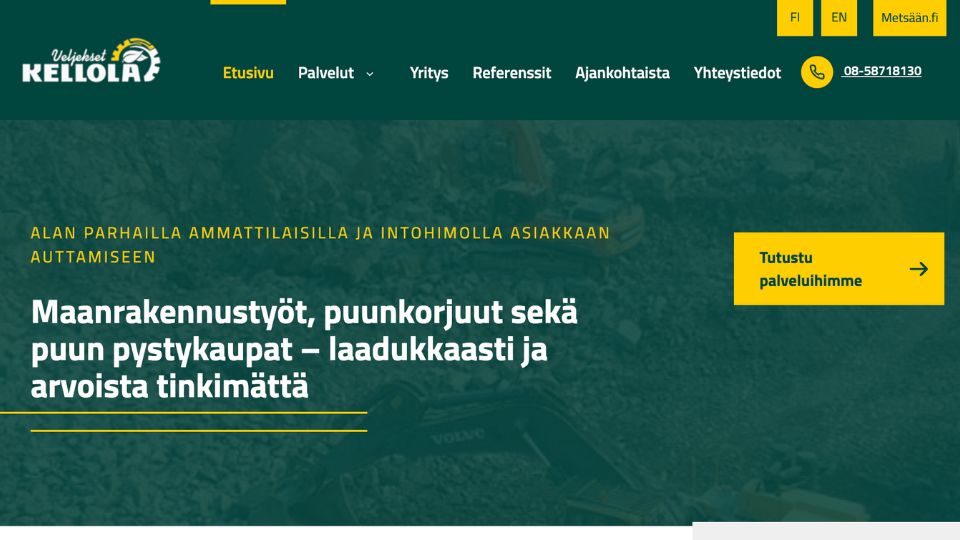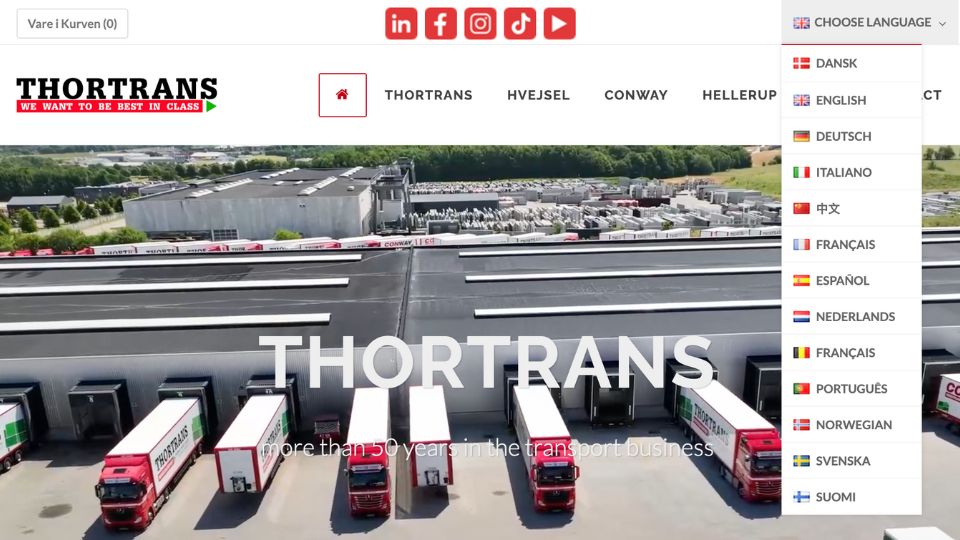In today's globalized world, having a multilingual website isn't just a luxury—it's a necessity. Whether you're managing a corporate site, an online store, or a community portal, reaching your audience in their native language can significantly boost engagement and accessibility. Concrete CMS offers a robust and flexible solution for setting up and managing a multilingual site. Let’s explore how you can leverage Concrete CMS for multilingual success and best practices for website localization.
What is a Multilingual Website?
A multilingual website offers content in multiple languages, catering to users who speak different languages. This type of website ensures that visitors can navigate, understand, and interact with your site in their preferred language, enhancing user experience and expanding your reach.
A multilingual website is designed to present content in more than one language, often tailored to the cultural and linguistic preferences of different user groups. This involves not just translating the text but also adapting various elements such as images, videos, and user interface components to ensure they are relevant and engaging to the target audience.
The primary purpose of a multilingual website is to:
- Expand Audience Reach: Connect with a broader audience by offering content in multiple languages.
- Improve User Experience: Enhance accessibility and ease of navigation for users who prefer or require content in their native language.
- Boost Engagement: Foster better engagement and interaction by providing culturally relevant content.
- Enhance Credibility: Build trust and credibility with international users by demonstrating a commitment to their language and culture.
Benefits of Having a Multilingual Website
- Increased Reach and Accessibility
- Global Audience: Tap into new markets and reach a global audience by making your content accessible in multiple languages.
- Inclusivity: Ensure that non-native speakers or those with limited proficiency in your primary language can still access your content.
- Improved User Experience
- Enhanced Navigation: Users can navigate and interact with the website in their preferred language, leading to a more intuitive and satisfying experience.
- Personalized Content: Culturally relevant content that resonates with users, fostering a deeper connection with your brand.
- Better SEO Performance
- Localized Keywords: Optimize your site for search engines in different languages, improving visibility and ranking in various regions.
- Hreflang Tags: Use hreflang attributes to inform search engines about language-specific versions of your pages, avoiding duplicate content issues and enhancing search performance.
- Competitive Advantage
- Market Penetration: Stand out in competitive markets by catering to the linguistic and cultural preferences of your target audience.
- Brand Perception: Enhance your brand’s global image and reputation by demonstrating a commitment to accessibility and inclusivity.
- Higher Conversion Rates
- Localized Marketing: Tailor marketing messages and calls-to-action to resonate with local audiences, increasing conversion rates and customer loyalty.
- User Trust: Build trust with international users by providing content that feels familiar and relevant to them.
By implementing a multilingual website with Concrete CMS, you can effectively engage with a diverse audience, enhance user satisfaction, and drive business growth on a global scale.
Who are You Translating For?
When planning to translate your website, it's essential to understand your target audience. This can be broadly categorized into two main groups: website editors and visitors. Each group has distinct needs and considerations, which will influence your translation strategy and implementation.
Website Editors
Role and Importance:
- Content Creation: Website editors are responsible for creating, updating, and managing the content on your site.
- Localization Management: They ensure that translated content is accurate, culturally appropriate, and aligned with the overall site design.
Considerations for Translating for Website Editors:
- Multilingual Editing Interfaces: Ensure that the CMS supports multiple languages in the backend, allowing editors to easily switch between languages and manage translations.
- Translation Workflows: Implement workflows that streamline the translation process, including content approval and publishing.
- Training and Resources: Provide training and resources to help editors understand the nuances of managing multilingual content.
Example: A multinational company with a decentralized team of content editors across different countries will need a robust system that allows seamless collaboration and efficient content management in multiple languages.
Website Visitors
Role and Importance:
- Primary Users: Visitors are the end-users who interact with your website, consuming the content and engaging with your services or products.
- User Experience: The goal is to provide a seamless and intuitive user experience, ensuring that visitors can easily navigate and understand the content in their preferred language.
Considerations for Translating for Website Visitors:
- User Interface Translation: Translate all user interface elements, including menus, buttons, and forms, to ensure a consistent experience across different languages.
- Cultural Relevance: Adapt content to be culturally relevant and sensitive to the target audience’s norms and preferences.
- Navigation and Accessibility: Implement intuitive language switchers and ensure that all translated content is easily accessible.
Example: An eCommerce website targeting international customers must provide product descriptions, checkout processes, and customer support in multiple languages to cater to diverse user preferences and enhance the shopping experience.
Translating the UX and Content
Translate the User Experience (UX):
- Ensure that navigation elements, such as menus and buttons, are translated and appropriately localized.
- Adapt visual elements, such as images and icons, to be culturally relevant and resonant with the target audience.
- Implement right-to-left (RTL) support for languages like Arabic and Hebrew to maintain usability and readability.
Translate Content:
- Focus on translating all textual content, including blog posts, product descriptions, and service information.
- Use professional translation services or skilled translators to ensure accuracy and cultural appropriateness.
- Regularly update translations to reflect any changes in the original content and maintain consistency across all language versions.
By addressing the needs of both website editors and visitors, you can create a multilingual website that is not only easy to manage but also delivers an exceptional user experience. This holistic approach ensures that your site remains accessible, relevant, and engaging to a global audience.
URL Strategy for Multilingual Websites
When setting up a multilingual website, selecting the right URL structure is crucial for both user experience and SEO. Here are three primary approaches to consider: domain-based, subdirectory-based, and subdomain-based.
Domain-Based Approach
Explanation: The domain-based approach involves using different top-level domains (TLDs) for each language version of your site. Each language is hosted on a separate domain, such as .us for English, .fr for French, and .de for German.
Examples:
- example.us for the English version
- example.fr for the French version
- example.de for the German version
Advantages:
- Clear Country Targeting: Using country-specific TLDs sends a strong signal to search engines about the geographic target of each site, potentially improving local SEO.
- Branding Opportunities: Allows for unique branding in each region, making the site feel more localized and relevant to users in that country.
- Legal and Compliance: Simplifies compliance with country-specific legal and regulatory requirements.
Use Cases:
- Large Enterprises: Companies with significant resources and a presence in multiple countries, such as multinational corporations and global brands.
- Highly Localized Content: Websites offering highly localized content or services, like news portals or eCommerce sites tailored to specific countries.
Subdirectory Approach
Explanation: The subdirectory approach organizes different language versions under a single domain, using subdirectories to separate them. This method keeps all content under one primary domain with distinct paths for each language.
Examples:
- example.com/en for the English version
- example.com/es for the Spanish version
- example.com/fr for the French version
Advantages:
- Single Domain Authority: All language versions share the same domain authority, which can be beneficial for SEO.
- Simplified Management: Easier to manage and maintain compared to multiple domains, as all content is hosted under a single domain.
- Consistent Branding: Maintains a unified brand identity across all language versions.
Use Cases:
- Small to Medium Businesses: Companies that want to expand their reach without managing multiple domains.
- Unified Brand Presence: Brands that prefer to maintain a single, cohesive online identity across all languages.
Subdomain Approach
Explanation: The subdomain approach involves creating subdomains for each language version of the site. Each language is hosted on a subdomain of the main domain, such as en.example.com for English and es.example.com for Spanish.
Examples:
- en.example.com for the English version
- es.example.com for the Spanish version
- fr.example.com for the French version
Advantages:
- Organized Content Structure: Subdomains can help keep different language versions neatly organized and separate from each other.
- Targeted SEO Efforts: Allows for specific SEO strategies for each subdomain, potentially improving search rankings in different regions.
- Scalability: Easy to add new languages by creating new subdomains without affecting the primary domain.
Use Cases:
- Growing Companies: Businesses expanding into new markets that want to keep their content structured and organized.
- Distinct Regional Presence: Companies that want to emphasize their presence in specific regions with tailored subdomains.
Choosing the Right Approach
Selecting the appropriate URL strategy depends on your specific needs, resources, and goals. Each method has its own set of advantages and is suited to different use cases. Consider the following when making your decision:
- SEO Goals: How important is local SEO for your business?
- Branding Strategy: Do you want a unified global brand or distinct local identities?
- Management Resources: How much effort can you dedicate to managing multiple domains or subdomains?
- User Experience: Which approach will make navigation easiest for your users?
By understanding the benefits and use cases of each URL strategy, you can make an informed decision that aligns with your business objectives and optimizes your multilingual website's performance.
Best Practices for Website Localization
Localizing your website goes beyond just translating text; it involves adapting all aspects of your site to suit the linguistic, cultural, and regional preferences of your target audience. Here are some best practices to ensure your localized website provides an exceptional user experience and performs well in search engines.
Language-Specific Content
Importance of Accurate and Culturally Adapted Translations:
- Precision: Ensure translations are accurate to maintain the integrity of your message. Mistranslations can lead to misunderstandings and damage your brand's credibility.
- Cultural Relevance: Adapt content to reflect the cultural nuances and preferences of each target audience. This includes idioms, expressions, and cultural references that resonate with local users.
Avoiding Direct Translations:
- Context Matters: Direct translations can often miss the context and intent behind the original text. Work with native speakers who understand the cultural context.
- Professional Translation Services: Use professional translation services to ensure high-quality and culturally appropriate translations.
RTL and LTR Support
Need for Both Right-to-Left (RTL) and Left-to-Right (LTR) Formatting:
- Layout Adaptation: Languages like Arabic and Hebrew are read from right to left (RTL), while languages such as English, Spanish, and French are read from left to right (LTR). Your website should support both formats to ensure an intuitive user experience.
- Concrete CMS Support: Concrete CMS offers built-in support for RTL languages, making it easy to create and manage content in both RTL and LTR formats. This ensures that your site can accommodate all users, regardless of their reading direction.
User Experience:
- Consistent Design: Providing an intuitive and familiar layout for both RTL and LTR users enhances their browsing experience and usability.
- Visual Elements: Adapt visual elements like images and icons to be culturally relevant and resonant with the target audience, whether they read from left to right or right to left.
Concrete CMS in Action: Multilingual Sites Done Right
Concrete CMS has proven to be a versatile and robust platform for creating multilingual websites that cater to diverse audiences. Here are some exemplary multilingual sites built with Concrete CMS that showcase its capabilities:
Both2nia
Overview: Both2nia is a comprehensive platform designed to foster collaboration and innovation in the Gulf of Bothnia region. The site provides extensive information in both Finnish and English, making it accessible to a broad audience in the region.
Link: Both2nia
Developed by: WTF Design

BTG Pactual
Overview: BTG Pactual, a prominent global wealth management firm, utilizes Concrete CMS to offer a fully localized experience for its international clientele. The site is available in multiple languages, providing critical financial information and services tailored to diverse markets.
Link: BTG Pactual
Use Case: Wealth management

Veljekset Kellola
Overview: Veljekset Kellola is a Finnish site offering a multilingual interface that caters to both local and international customers. By providing content in Finnish and English, the site ensures that users can easily access and understand its offerings.
Link: Veljekset Kellola

THORTRANS
Overview: Thortrans, a transportation company, has effectively implemented multilingual functionality to serve both Danish and English-speaking users. This ensures that their services are accessible and comprehensible to a wider audience.
Link: Thortrans
Developed by: Concrete5.dk

Resources for Implementing Multilingual Functionality in Concrete CMS:
Concrete CMS provides a range of tools and resources to help you implement multilingual functionality effectively. Here are some key resources to guide you through the process:
- Concrete CMS User Guide for Multilingual Sites: This comprehensive guide provides step-by-step instructions on setting up and managing multilingual sites within Concrete CMS. Link: Concrete CMS Multilingual Documentation
- Concrete CMS Blog on Website Translation: This blog post offers practical tips and best practices for translating your website right, ensuring that your multilingual site is both effective and user-friendly. Link: How to Translate Your Website Right
By leveraging these resources and learning from successful examples, you can effectively implement multilingual functionality in your Concrete CMS site, ensuring it meets the needs of a global audience and provides an exceptional user experience.
Conclusion
- Recap of the benefits of using Concrete CMS for multilingual websites
- Encouragement to adopt a multilingual approach with Concrete CMS
- Final thoughts on the global reach and accessibility of multilingual websites
